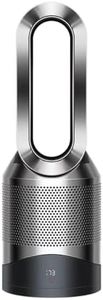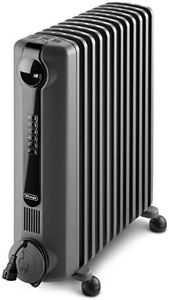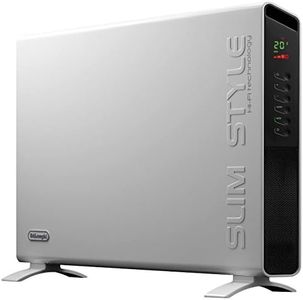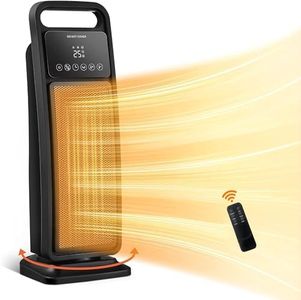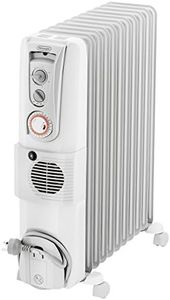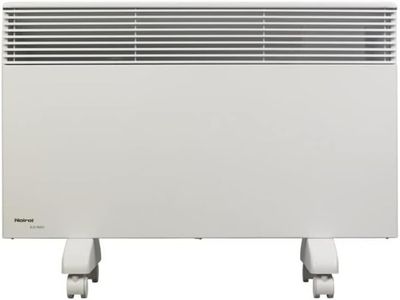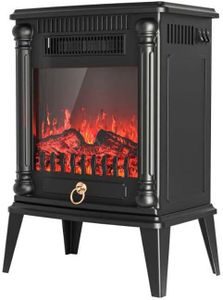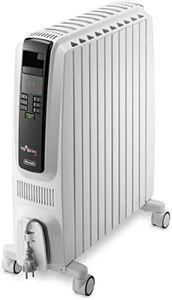We Use CookiesWe use cookies to enhance the security, performance,
functionality and for analytical and promotional activities. By continuing to browse this site you
are agreeing to our privacy policy
10 Best Large Room Heaters
From leading brands and best sellers available on the web.Buying Guide for the Best Large Room Heaters
Choosing a large-room heater is all about making sure the unit can safely and effectively warm the space you have in mind. To make the best choice, you need to consider the size of your room, your heating preferences, and how much you value features like quietness or programmability. Instead of picking a heater based just on brand or appearance, it's important to focus on specifications that impact performance, convenience, and energy use. This way, you'll get a heater that not only fits your space but also matches your day-to-day needs. Let's look at the most important aspects to help you choose wisely.Heating Capacity (BTUs or Watts)Heating capacity tells you how much heat the heater can generate and is usually measured in BTUs (British Thermal Units) or watts. This is crucial because it determines whether the heater can adequately warm a large room. Low-capacity heaters (under 1,500 watts or 5,000 BTUs) are best for small areas, mid-range (1,500–2,500 watts or 5,000–8,500 BTUs) can handle medium rooms, while high-capacity (over 2,500 watts or 8,500 BTUs) are suitable for large spaces. To pick the right one, measure your room size in square feet and match it with the appropriate heater output—bigger rooms need more power, but too much can lead to wasted energy.
Type of HeaterThere are several types of large-room heaters, including convection, radiant, and fan-forced. Convection heaters warm air which then circulates around the room, making them great for consistent, whole-room heating. Radiant heaters heat objects and people directly and are ideal if you want fast, spot heating. Fan-forced heaters use a fan to distribute heat quickly and can warm up a room rapidly but might be noisier. Your choice should depend on whether you value silent operation, quick heating, or a steady, even warmth throughout the space.
Safety FeaturesSafety is essential, especially in a large room where a heater might run unsupervised for longer periods. Features such as tip-over protection, overheat shut-off, and cool-touch exteriors are designed to prevent accidents or injuries. Heaters that shut down automatically if knocked over or if internal temperatures rise too high add peace of mind. If you have children or pets, these features become even more important.
Thermostat and ControlsA built-in thermostat and adjustable controls help you maintain a comfortable temperature without constantly monitoring the heater. Simple dial or electronic controls let you set your preferred warmth level. Programmable timers and remote controls add convenience, allowing you to pre-set operating hours or change settings from across the room. If you want maximum comfort and flexibility, look for a heater that lets you tailor its operation to your schedule and preferences.
Noise LevelNoise level refers to how much sound the heater makes when it's operating. Fan-driven heaters are usually louder, while oil-filled or panel heaters are typically quieter. If you're planning to use the heater in a bedroom or workspace, a quieter model is likely more suitable. For living rooms or spaces where background noise isn’t an issue, a noisier, more powerful heater might be just fine.
Portability and SizeThe size and weight of the heater affect how easy it is to move and where you can position it in your room. Some heaters come with wheels or handles for easier mobility, which is helpful if you need to move it between rooms. Consider your room layout and whether you’ll want to store the heater away when it’s not in use, and pick a model that’s a good fit for your living arrangements.
Energy EfficiencyEnergy efficiency measures how much heat a heater provides for the electricity it uses. Features like energy-saving modes, eco settings, or programmable thermostats can help reduce running costs. For those concerned about energy bills or environmental impact, choosing a heater with efficiency features or the right size for your room (to avoid overuse) is key.
